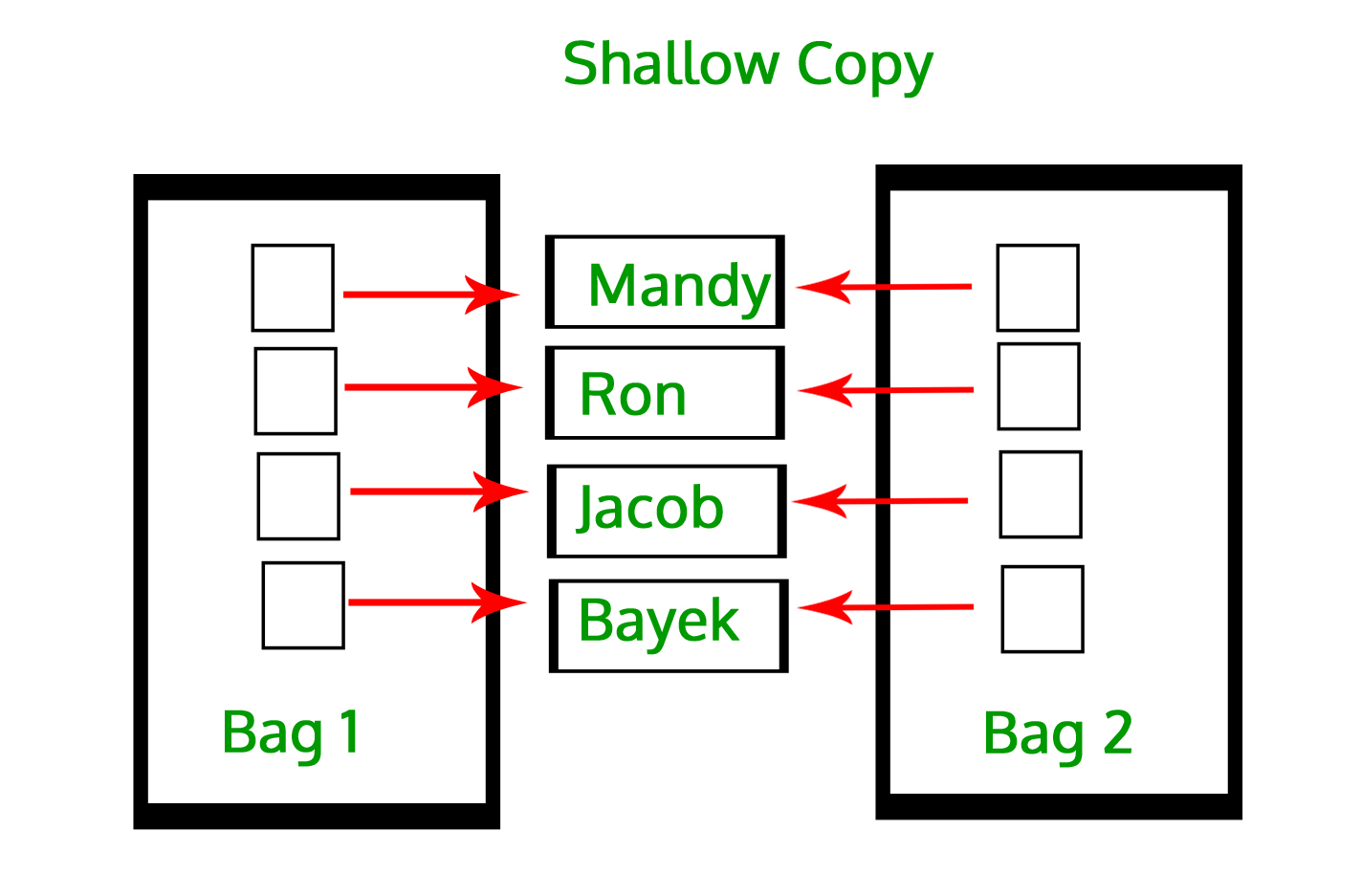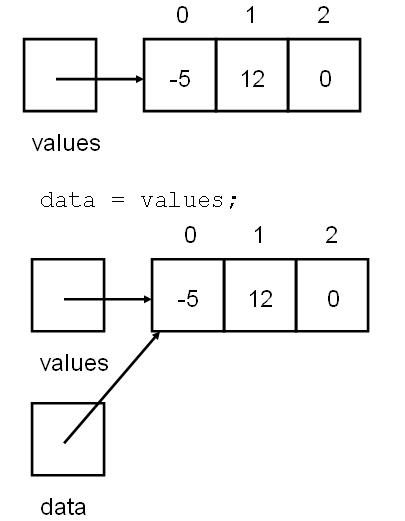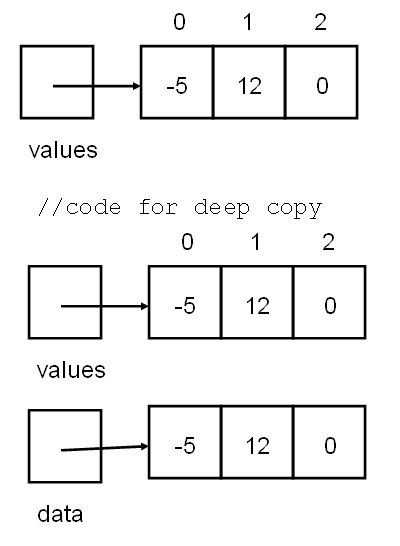When creating copies of arrays or objects one can make a deep copy or a shallow copy.
Shallow Copy


In case of shallow copy, a reference of object is copied in other object. It means that any changes made to a copy of object do reflect in the original object.
Shallow Copy Example in Go
original = &MyObject{"hello"}
copied = new(MyObject)
*copied = *original
Deep Copy


In case of deep copy, a copy of object is copied in other object. It means that any changes made to a copy of object do not reflect in the original object.
The difference between shallow and deep copying is only relevant for compound objects (objects that contain other objects, like lists or class instances). A shallow copy constructs a new compound object and then (to the extent possible) inserts references into it to the objects found in the original. A deep copy constructs a new compound object and then, recursively, inserts copies into it of the objects found in the original.
Reference
- https://www.cs.utexas.edu/~scottm/cs307/handouts/deepCopying.htm
- https://www.geeksforgeeks.org/copy-python-deep-copy-shallow-copy/ (It’s Python but I thought the fundamental is the same… maybe not?)